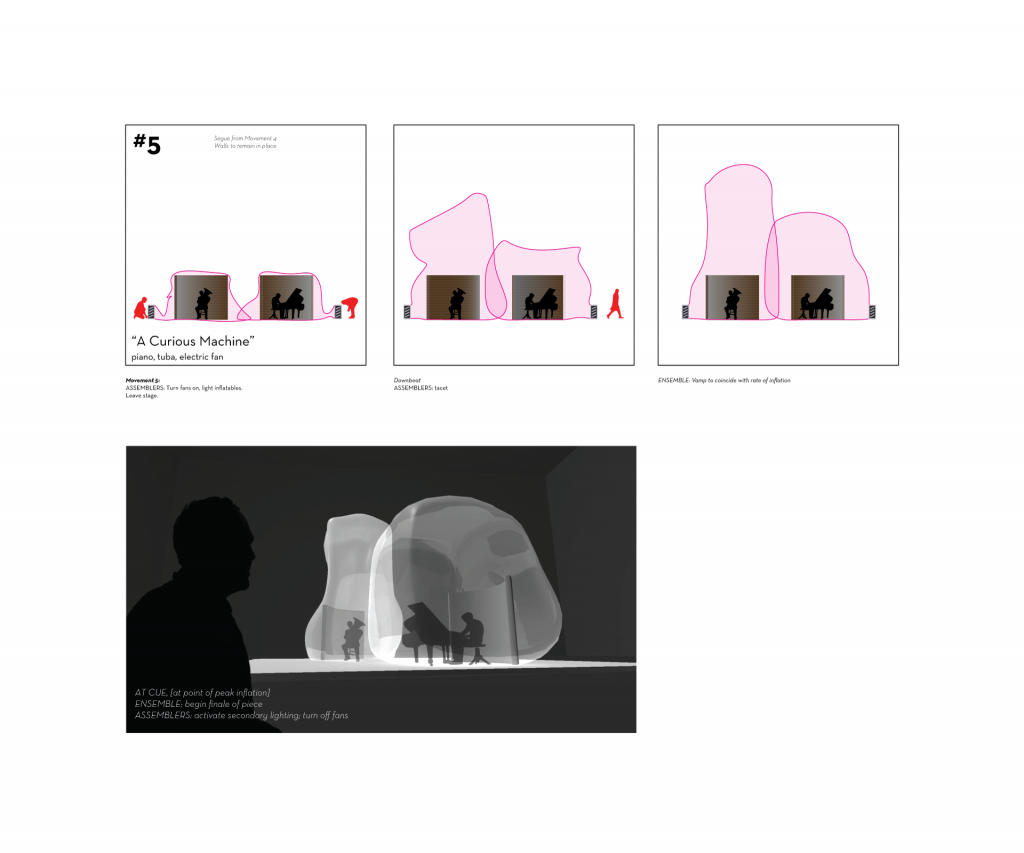Submission for Music In Architecture / Architecture In Music, University of Texas at Austin
With Michael Abrahamson, Jacob Chandler, Amie Morrison, and David Koenig
What music and architecture have in common are their similarly mediated patterns of production. They utilize standardized forms of notation through which others produce a work. In both disciplines, notation enables communication between designer (composer or architect) and maker (musician or constructor). For this project, participants have selected five abstract photographs, from each of which a musical movement and an architectural construct are formulated. These arbitrary starting points were treated by both composers and designers as undisciplined forms of notation. Group members simultaneously explored the capacity of music and architecture can emerge from such raw material, and have juxtaposed the results.
Where music and architecture differ is in their ability to communicate completeness at a glance. Architectural drawings – floor plans, section cuts and elevations – permit the viewer an all-encompassing orthographic viewpoint, a form of synoptic representation. They are representations not of what tasks must be undertaken, but what end product must be created. There are inherent limits to the amount of information that can be conveyed about a building through a drawing on a sheet of paper, but both architects and laypeople have come to accept two-dimensional drawings as “complete” illustrations of a building. Architecture has become something that we expect to be able to understand at a glance. Musical scores, by contrast, are inherently sequential and procedural. Only a very experienced musician or composer can look at a page of music and perceive its acoustical characteristics without a conscious process of translation or interpretation. What if one were able to represent a musical composition synoptically? By contrast, what effects would an architecture composed through sequences and procedures achieve? Using similar propositions, this project hopes to have implications for both disciplines.
Alternatives to traditional notation are only truly necessary for music that cannot adequately be expressed by traditional notation. However, it is possible to augment traditional notation with the further expression of spectra. The only spectrum typically expressed in music is the spectrum of dynamics. Pitch, rhythm and articulation all have determinate means of expression, but dynamics, expressed by symbols such as mp, set up an indeterminate system in which the outcome is based solely on the performer’s individual internalized spectrum of volume. There are other spectra that could be expressed in this manner; the compositions for this project take on the following spectra: dry/wet, bassiness/trebliness, intensity, distortion, vibrato. Because of their interconnection, the music and architecture will be created as a total work of art, a distinctive one-time happening. The length and co-dependence of these movements and constructs requires that the creation of this Gesamtkunstwerk will take place at a satellite location before the symposium. The performance will be documented and exhibited as a selection of materials and documentary video.
All musical compositions by Morrison and Koenig:
“Mountains”
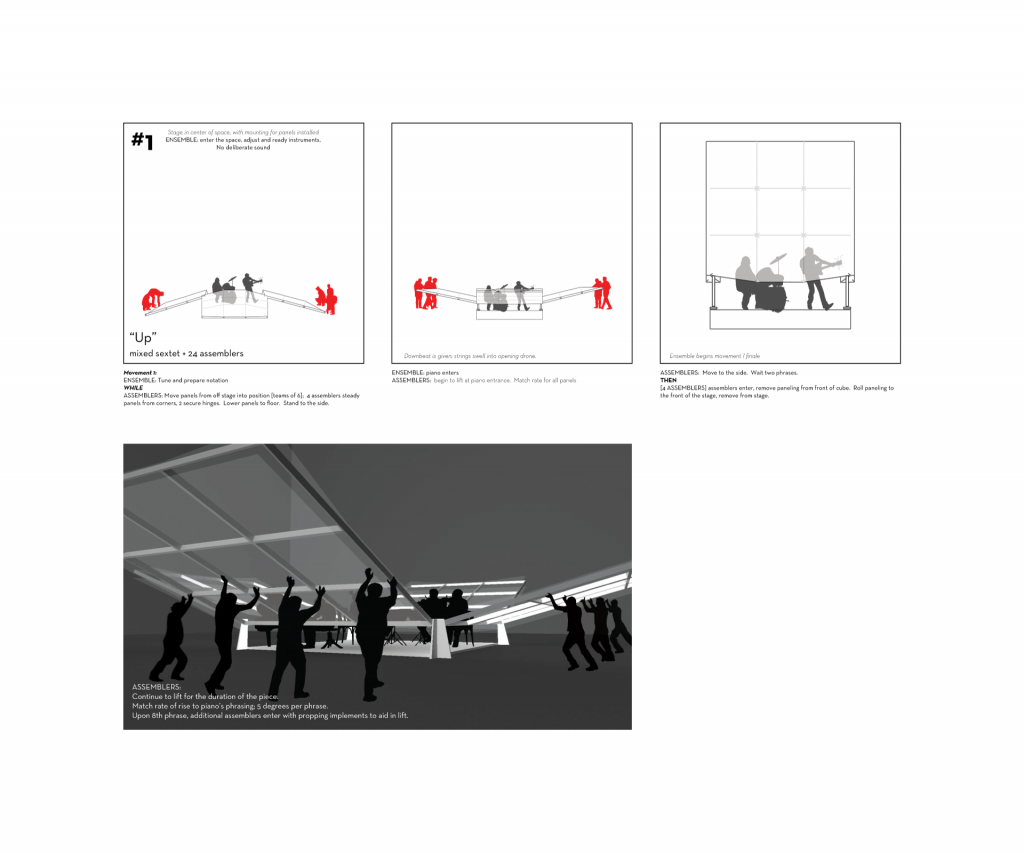
“Lights”
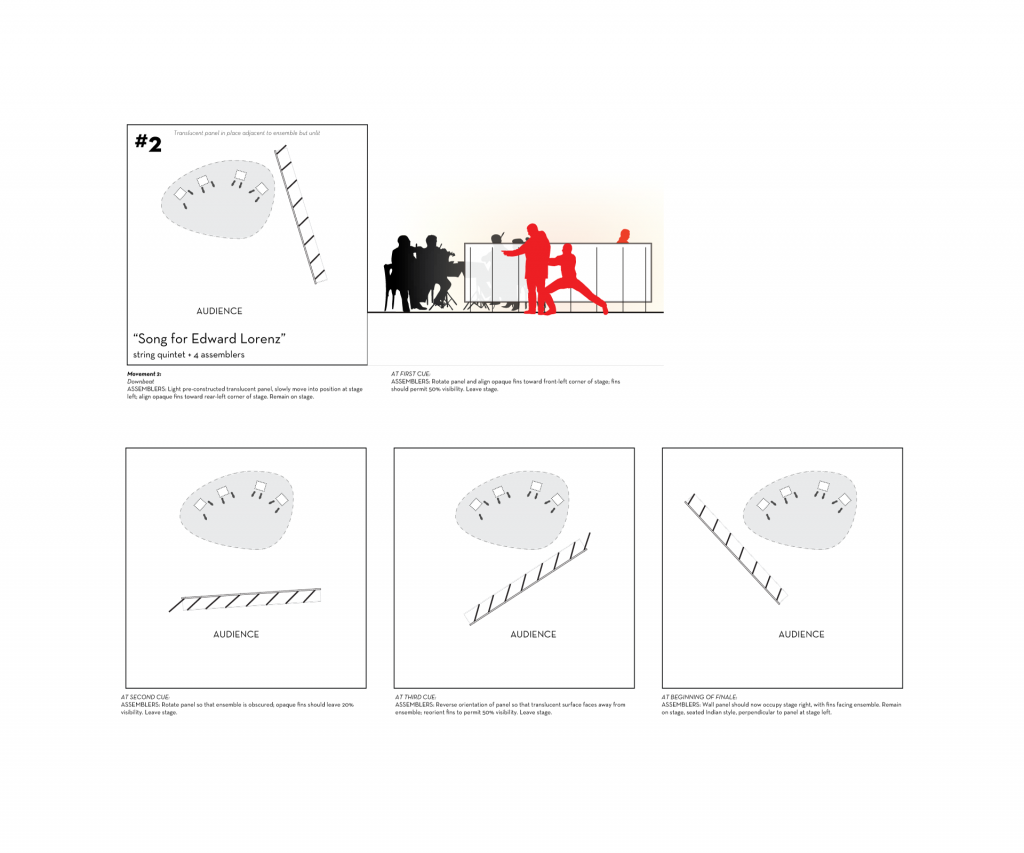
“Green”
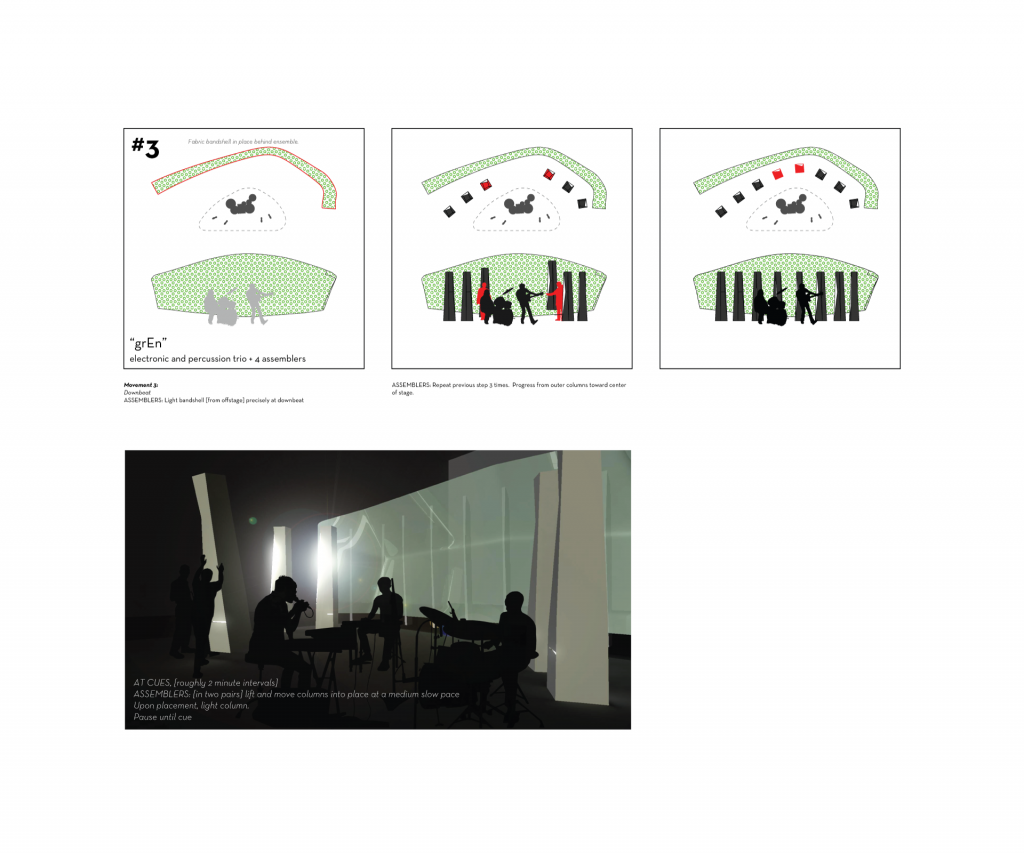
“Bug”
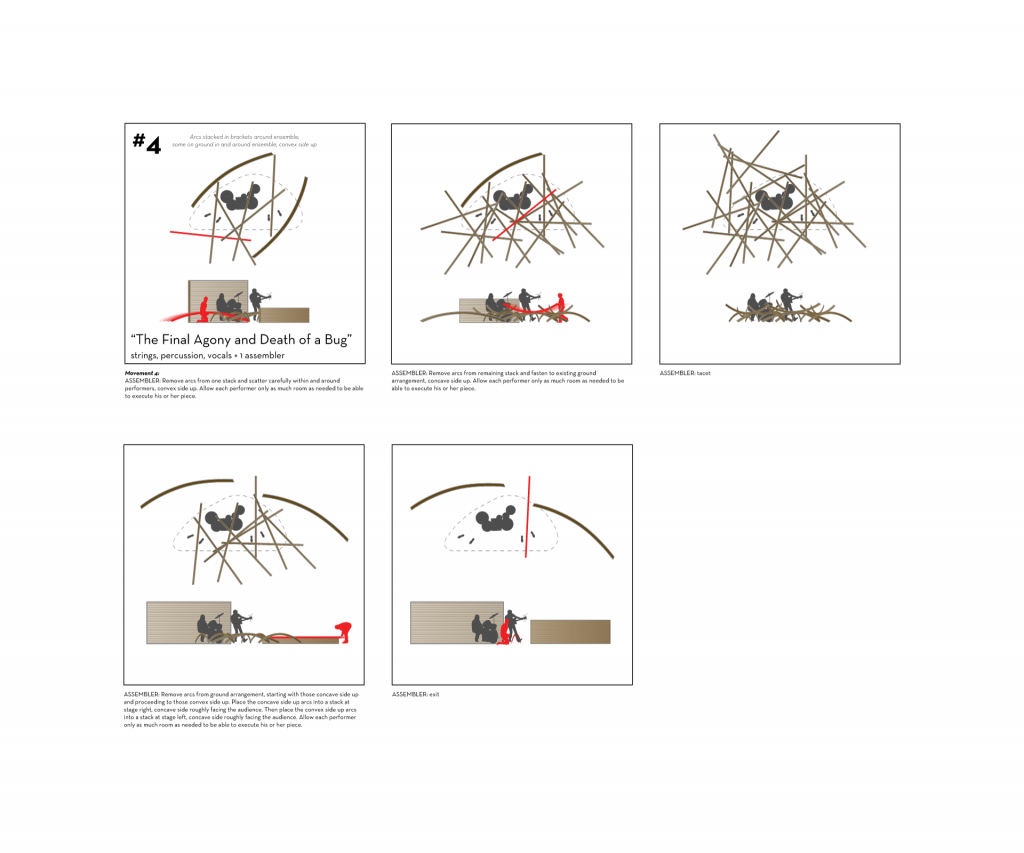
“Machine”
